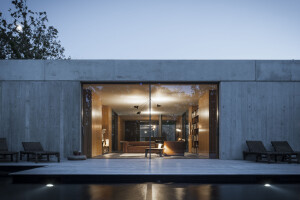The Nature Boardwalk at Lincoln Park Zoo transforms a picturesque yet unsustainable urban pond from the 19th century into an ecological habitat buzzing with life.
With the design’s improvements to water quality, hydrology, landscape, accessibility, and shelter, the site is able to function as an outdoor classroom that demonstrates the coexistence of nature and city.
When it was built in 1908, Lincoln Park Zoo’s South Pond reflected the Victorians’ romantic and recreational concept of nature in the city. Today the pond offers benefits that extend beyond visual spectacle. As the Nature Boardwalk, it has become a crucial, connective habitat for resident and migratory animal populations, a popular outdoor destination and learning landscape for city residents and visitors alike, and a functional, self-sustaining solution to Chicago’s aging storm water infrastructure.
The boardwalk circumscribes the pond, passing through various educational zones that share information about different animals, plants, and habitats. A pavilion integrated into the boardwalk sequence provides shelter for open-air classes, programs, and events on site. Altogether, the design improves water quality and plant variety for a better, more diverse animal habitat, reduces reliance on aging city infrastructure, and creates an experiential outdoor educational environment.


























